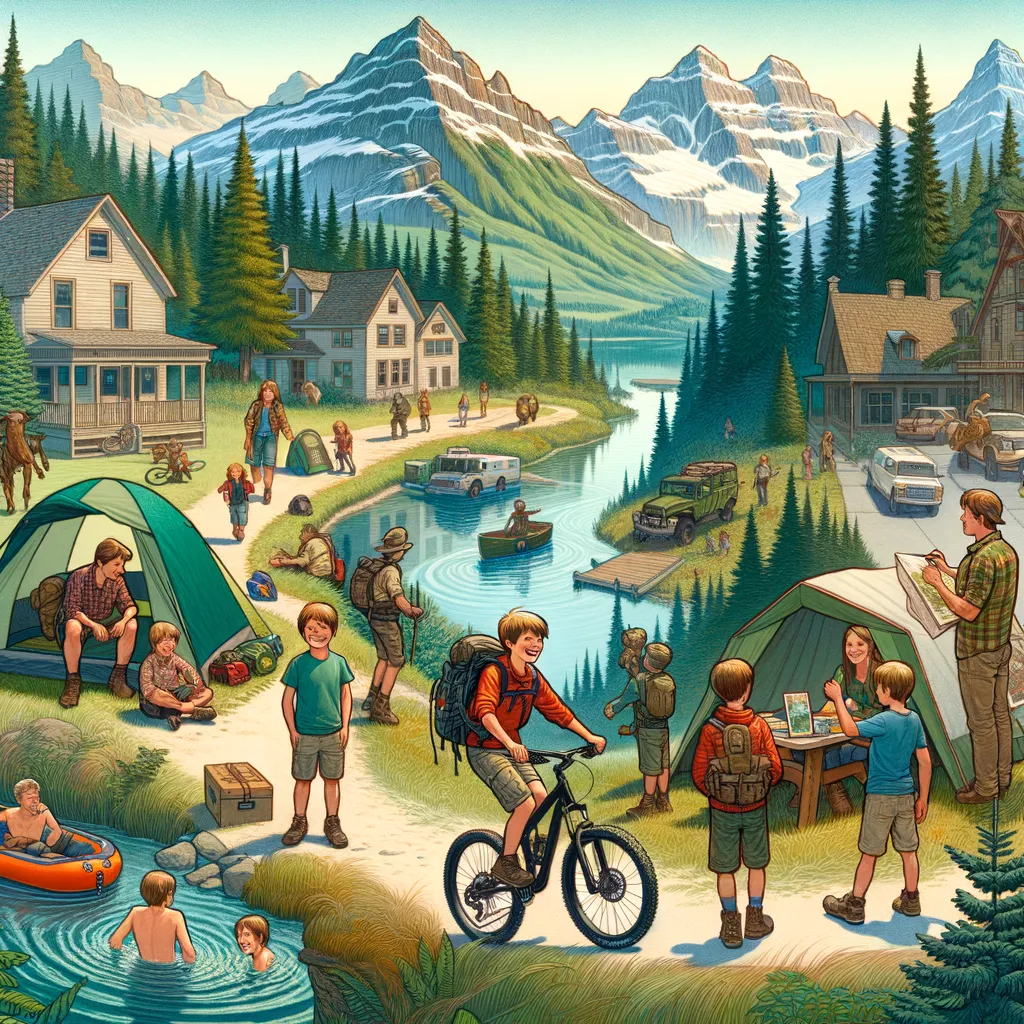A Guide to the World’s Most Remote Hiking Trails
Welcome, adventurous parents! If you’re looking for a way to introduce your family to the great outdoors, embarking on a journey through some of the world’s most remote hiking trails might just be the thrilling experience you’re searching for. Whether you’re seasoned hikers or just starting to explore the wonders of nature together, this guide is designed to help you navigate the untamed wilderness with confidence. Before you pack your bags, let’s dive into some essential tips and breathtaking destinations that await. For more insights on gear and preparation, don’t forget to visit Outdoors. Interested in more camping details? Camping info has you covered.
Preparation is Key
Embarking on remote hiking trails with your family is not only about embracing the beauty of the natural world; it’s also about preparation. Ensuring you have the right gear, understanding the challenges you might face, and being prepared for any situation are crucial steps in your journey. From lightweight tents to GPS devices, making sure you have the appropriate equipment can make or break your adventure.
Understanding Your Limits
It’s essential to assess the physical condition and endurance levels of every family member participating. Remote trails often mean there are few, if any, amenities or escape routes. Gauge your family’s abilities realistically and choose trails that match your shared skill level and experience.
Picking the Right Trail
Now that you’re geared up and have assessed your family’s hiking abilities, let’s explore some of the world’s most remote trails. Remember, the journey is not just about the destination but the memories you create along the way.
1. The Darien Gap, Panama and Colombia
Known as one of the most challenging hikes globally, the Darien Gap is a dense jungle that serves as a land bridge between North and South America. It’s not for the faint-hearted or inexperienced. However, for those who dare, it promises unparalleled biodiversity and the thrill of true wilderness.
2. The Pacific Crest Trail, USA
Spanning over 2,650 miles from the Mexican border through California, Oregon, and Washington to the Canadian border, the Pacific Crest Trail offers diverse landscapes, from arid desert to glaciated valleys. While thru-hiking the entire trail is a monumental undertaking, there are plenty of sections that offer a taste of the remote wilderness suitable for families.
3. The Te Araroa Trail, New Zealand
Stretching 3,000 kilometers from the northern tip of New Zealand to the southern end, the Te Araroa Trail showcases the breathtaking diversity of the country’s landscapes. From coastal beaches to volcanic terrain, it’s a hiker’s paradise that can be tackled in segments for a family-friendly adventure.
To embark on a journey through any of these remote hiking trails is to embrace the unknown and the untamed. As you prepare for your adventure, remember that the most important aspect of hiking remotely is not just the sights you see but the bond and the memories you create as a family. The world’s most remote trails offer an unparalleled opportunity to grow together, challenging your limits and experiencing the vast beauty of the planet in a profoundly personal way.
Stay tuned for more tips on selecting the right gear, navigating challenging terrains, and making the most of your family hiking adventure. And remember, an extraordinary journey awaits – all you need to do is take the first step.

A Guide to the World’s Most Remote Hiking Trails for Families
Welcome, adventurous parents! If you’re keen to introduce your family to the exhilarating experiences the great outdoors has to offer, you’ve stumbled upon the perfect guide. Tackling some of the world’s most remote hiking trails together could be the thrilling escapade you’re yearning for. Whether you are seasoned hikers or novices eager to explore nature’s marvels, this guide aims to equip you with the knowledge to journey through wild terrains confidently. Before setting off, let’s delve into essential preparation advice and introduce the awe-inspiring destinations that await. For additional insights on gear and preparation, be sure to visit Outdoors. Looking for more camping details? Camping info is your go-to resource.
Preparation is Key
Heading into remote hiking trails with your loved ones involves much more than simply basking in natural beauty; it requires meticulous preparation. Having the appropriate gear, understanding the potential challenges, and equipping yourselves for various situations are essential aspects of your planning. From selecting the right lightweight tents to packing dependable GPS devices, ensuring you have the right equipment is fundamental for a successful family adventure.
Understanding Your Limits
Evaluating the physical capabilities and stamina of each family member is critical. Remote trails often lack amenities or easy exits. Realistically consider your family’s abilities, selecting trails that align with your group’s overall skill level and experience.
Picking the Right Trail
Armed with the right gear and a clear assessment of your family’s hiking proficiencies, it’s time to discover some of the globe’s most secluded trails. Remember, the essence of this journey lies not solely in the destination but in the cherished memories formed along the path.
1. The Darien Gap, Panama and Colombia
Reputed as one of the globe’s most formidable hikes, the Darien Gap is a dense jungle corridor connecting North and South America. It demands respect and is recommended for the bold and experienced. Those who accept its challenge are rewarded with rich biodiversity and the essence of true wilderness.
2. The Pacific Crest Trail, USA
This trail stretches over 2,650 miles from the Mexican border through California, Oregon, and Washington, ending at the Canadian boundary. Its varied terrains, from deserts to glaciated expanses, make for diverse experiences. While conquering the entire trail is an immense feat, numerous segments offer manageable yet remote adventures perfect for families.
3. The Te Araroa Trail, New Zealand
Extending 3,000 kilometers from the tip of the North to the South of New Zealand, the Te Araroa Trail is a showcase of the nation’s landscape diversity. With scenes ranging from serene beaches to dramatic volcanic fields, it offers sections suitable for family expeditions.
5 Essential Tips for Family Hiking in Remote Trails
1. Extensive Research and Planning
Thorough research about your chosen trail is indispensable. Understand the climate, potential hazards, and the availability of water sources along the route. Planning ensures that your family remains safe and enjoys the journey to the fullest.
2. Prioritize Safety and Navigation Skills
Invest in reliable communication devices and a quality GPS system. Familiarize yourself with basic navigation skills, even if you plan to hike well-marked trails. It’s better to be over-prepared, especially in remote areas.
3. Pack Smart and Light
While ensuring you carry all essentials, aim to pack as lightly as possible. Heavy backpacks can quickly drain energy, reducing the enjoyment of the hike. Each family member should carry a pack that’s appropriately weighted for their age and strength.
4. Prepare for Emergencies
A solid emergency plan is a must. This includes knowledge of first aid, having a comprehensive first aid kit, and understanding the fastest way to seek help if required. Talk to your family about what to do in various scenarios to ensure everyone is prepared.
5. Foster a Positive Attitude
Perhaps the most crucial aspect of embarking on such an adventure with your family is maintaining a positive attitude. Challenges will arise, but viewing these as part of the adventure can help keep spirits high and ensure a memorable experience
Disclaimer
The articles available via our website provide general information only and we strongly urge readers to exercise caution and conduct their own thorough research and fact-checking. The information presented should not be taken as absolute truth, and, to the maximum extent permitted by law, we will not be held liable for any inaccuracies or errors in the content. It is essential for individuals to independently verify and validate the information before making any decisions or taking any actions based on the articles.



